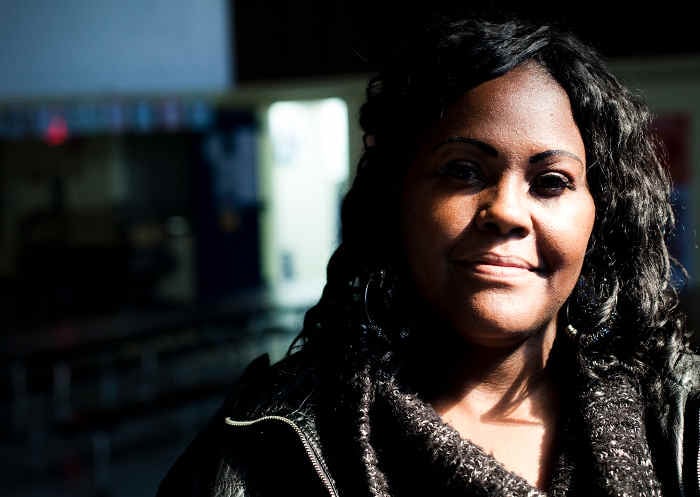 Each Thursday at Martin Luther King, Jr. elementary school in West Oakland, Monica Parks shows up before her three girls are out of class for the day. She sets up tables and a tent for shade. She displays cabbage, greens, onions, apples, oranges, tomatoes, avocadoes, mangos, cherries, and strawberries.
Each Thursday at Martin Luther King, Jr. elementary school in West Oakland, Monica Parks shows up before her three girls are out of class for the day. She sets up tables and a tent for shade. She displays cabbage, greens, onions, apples, oranges, tomatoes, avocadoes, mangos, cherries, and strawberries.
When the students walk out of the cafeteria, they meet their parents on this concrete courtyard beside the flagpole and in front of the school walls’ murals of historic African-American figures. Monica waits there to sell the locally-sourced, pesticide-free produce.
“I had one little girl come up to the table and look at an orange,” Monica says. “She said she’d never eaten one. She said she didn’t like them. I told her it tasted like a Starburst, and I peeled a pink-flesh orange for her. She took a wedge and her face lit up. She likes oranges now.”
It’s no surprise the girl had never eaten an orange, or never eaten one that tasted like an orange is supposed to taste. West Oakland has fifty-three liquor stores, and, until recently, no grocery stores (they now have a co-op of the Mandela Marketplace, another USDA’s Community Food Project (CFP) grant recipient). In 2005, the East Bay Asian Youth Center, a program begun at Berkeley High in 1976 as a way of addressing inner-city youth violence and gang activities, conceived a new project called the Oakland Fresh School Produce Markets (OFSPM). Recognizing the city’s lack of access to fresh food and subsequent trend of diet-related health disorders, OFSPM set out to assess the different communities in their food security issues.
Director of OFSPM, Christina Cherdboonmuang and youth volunteers took to the neighborhoods on bikes, evaluating corner and liquor stores for food opportunities and surveying residents about food access and health problems. They discovered that over half the residents they met had to travel out of their community to find healthy, fresh food and over half either suffered from or had family members who suffered from diet-related disease like diabetes and hypertension.
Christina and the students brainstormed solutions to the obvious food insecurity. Rather than attempt to initiate farmers markets, which have the challenges of being cumbersome and involving risk on the part of the farmers, the group decided to sell produce at stands outside local schools. Furthermore, the farmers market in the conventional sense of a big parking lot full of tented vendors from outside of West Oakland seemed to be an intimidating or impersonal space to many residents.


